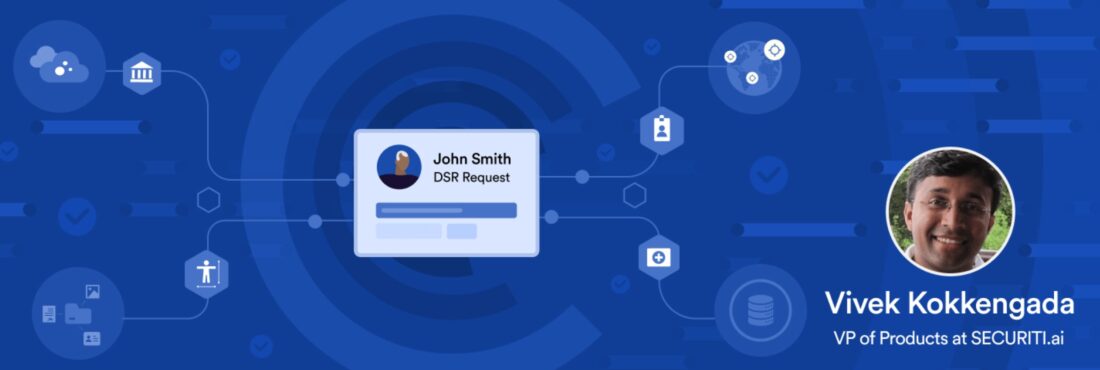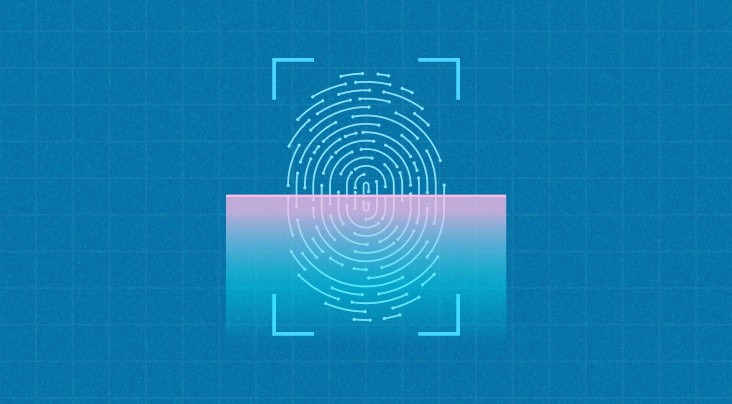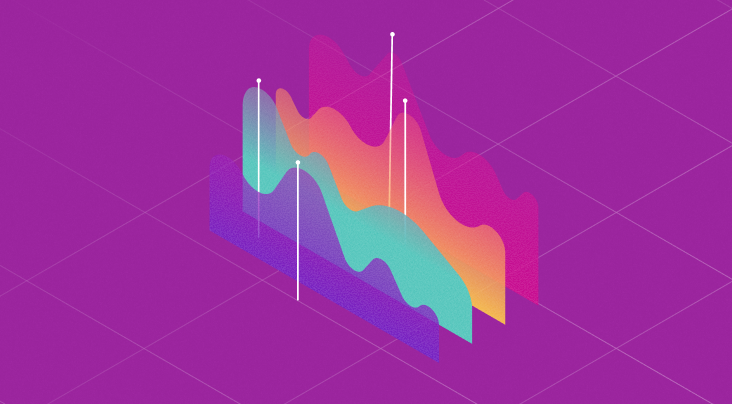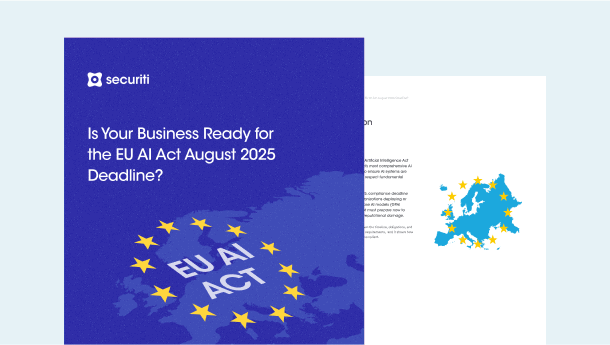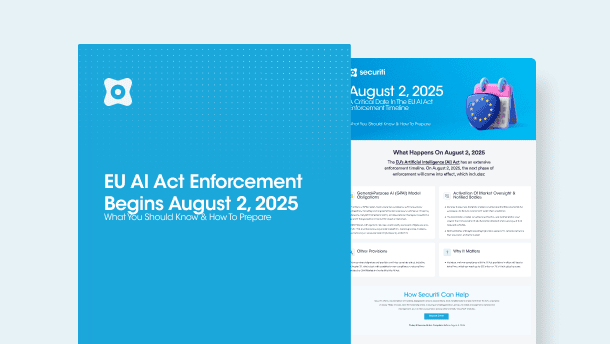Many business owners, compliance professionals, and IT security staff have been scrambling to deal with the impact that GDPR had when it took effect on May 25th, 2018. Over 12 significant fines have been levied against organizations worth €359M in the first year. Marriot, British Airways, Lithuania, and of course, Google in France are just several well-known brands that have suffered significant fines for breaches or improperly handling sensitive consumer data.
The CCPA is following in GDPR’s footsteps when it comes to levying fines for not following the stringent guidelines of the law. For example, the California Civil Code that defines one major sanction reads “civil class action lawsuits to pay statutory damages between $100 to $750 per California resident and incident, or actual damages, whichever is greater.”
This presents a much bigger issue for most organizations, as there is no limit on the number of private civil actions that might be launched, and the costs will be high. The Equifax breach affected roughly 15 million Californians, meaning that if there were a similar breach to happen under the CCPA, in a worst-case scenario, they could have been liable for over $11 billion in claims, simply on the grounds of the consumer distress caused.
If the Equifax Breach Occurred Under CCPA Regulations the Company May Have Been Liable for Over $11 Billion in Claims
The CCPA isn’t just a state law. It will become the de-facto national standard for the foreseeable future, because of the sheer numbers of Californians most businesses in the United States will have to comply. Meaning, with nearly 40 million Californians, the majority of businesses will have at least some Californians and their PII in their databases, CRM’s, or other systems.
Companies will have to disclose to California customers what data of theirs has been collected, delete it, and stop selling it if the customer makes that request. According to PwC, enterprises have already spent more than $5 million on average preparing for the CCPA, with spending expected to rise dramatically throughout 2020.
What Exactly is the California Consumer Privacy Act (CCPA)?
The California Consumer Privacy Act (CCPA) is a bill intended to enhance privacy rights and consumer protection for residents of California. The CCPA intends to provide California residents with the right to:
- Know what personal data is being collected about them.
- Know whether their personal data is sold or disclosed and to whom.
- Say no to the sale of personal data.
- Access their personal data.
- Request a business to delete any personal information about a business collected from them.
- Not be discriminated against for exercising their privacy rights.
Privacy and security professionals have had numerous questions about how the law will change the way they handle sensitive data and the various requests they may receive from their customers who request data collection information or want to know other information about their PII called DSAR’s.
In the case of the CCPA what exactly is personal information or PII? CCPA defines personal information as information that: “identifies, relates to, describes, is reasonably capable of being associated with, or could reasonably be linked, directly or indirectly, with a particular consumer or household such as a real name, alias, postal address, unique personal identifier perhaps a log in name, online identifier such as an IP address, email address, account name, social security number, driver's license number, passport number, or other similar identifiers.”
What Is a DSAR or Data Subject Access Rights? - Also Known as DSR, SRR, and SAR’s
The term Data Subject Access Rights first gained popularity with the advent of GDPR. The acronym DSAR stands for Data Subject Access Rights, however you may see it used as an acronym for Data Subject Access Requests. To be clear, Data Subject Access Rights are the rights provided to the consumer by the legislation while a DSAR is the actual consumer request for information or deletion. In addition, you will see DSR, SRR, VCR, IRR, and SAR’s used interchangeably within organizations and even legal entities.
Data Subject Access Rights are the rights provided to the consumer by the legislation, while a SAR is the actual consumer request for information or deletion. In addition, you will see DSR, SAR, SRR, IRR, and VCR’s used interchangeably within organizations and even legal entities.
- DSR – Data Subject Request – identical to a DSAR
- SAR – Subject Action Request – identical to a DSAR
- SRR – Subject Rights Request – identical to a DSAR
- IRR – Individual Rights Request – identical to a DSAR
- VCR – Verifiable Consumer Request – while this is like a DSAR, SRR, SAR, IRR, and DSR, some organizations are interpreting this as the first step in completing a DSAR. Meaning, VCR is verifying the request that you received is from an actual data source in the system and not simply SPAM.
Regulations like the CCPA give individuals the right to request information about the way companies handle their personal information. A data subject makes his request via email, an online form, or another form of communication dictated by the guidelines of the law and the choice of the company. The company then needs to verify the requestor’s identity and existence within their database and track the request through to resolution. This process is required to be completed within 45 days to follow the compliance guidelines of CCPA.
DSAR Requests under CCPA Will Overwhelm Organizations
While the legislators in California who created CCPA may have thought complying with CCPA would be simple for organizations, they underestimated the cost and impact of the legislation. Considering all the moving parts in correctly operationalizing a DSAR, organizations have struggled to implement a viable solution.
Analyst firm Gartner predicts that, by 2021, 80% of the negative financial impact of the CCPA will spiral from a failure to implement scalable processes to manage these requests unless they invest in a cost effective, automated solution.
Let’s walk through a simple bank transaction to understand the complexity of finding PII and matching it to the data subject.
Consider the following transaction:
- A single bank transaction may get replicated across 100 systems or databases within a large bank.
- Storage has become so inexpensive that enterprises have collected petabytes of data each year and have retained almost all of it in disparate databases.
- Data is routinely propagated across the organizations to provide access to a wide variety of users for various business initiatives.
As we have found with many data governance exercises within organizations, the massive growth in data collection and proliferation has not been accompanied by an equally matched effort in data management and data governance. In other words, organizations don’t know where all the PII of customers resides in the systems and worse how to query the systems and databases to find it.
The consequences of not correctly identifying and governing the data have been painful as data breaches, misuse of PII, and a loss of consumer trust. In response, companies have poured resources into implementing security controls to block or restrict access to their data, however, whereas security is focused on who is using the data, privacy and CCPA is about how the data is being used and for what purpose. Until now, the basic data inventory or data governance process for many companies has been a manual one consisting of application data owner surveys and spreadsheets.
DSAR Requests will Force More Effective Data Governance
DSARs push the traditional manual process to its breaking point. Not only in people resources required to manually search those 100 systems in the bank example for each DSAR, but also in the accuracy and completeness required to be defensible with the regulators. It is a big data problem, and a new approach is needed to process petabytes of data, extract key data points, and derive the relationships between them.
Both GDPR and CCPA significantly increase the requirements on businesses regarding how they address individual rights and related requests (e.g., to access or delete personal information) – specifically the type of requests they need to address and the timeline and process they need to follow to fulfill the requests. For example, GDPR requires that requests be addressed within one month, CCPA within 45 days (with some exceptions and extensions permitted).
DSAR Requirements for CCPA Compliance
The California Attorney General’s office published regulations that provide guidance on complying with Data Subject Access Requests (DSARs), a critical feature of the CCPA that allows consumers the right to know what personal information:
- An organization has collected
- The categories of PII that have been collected (Birth Date, Social Security Number, Gender, ect.)
- Purpose of collecting the data
- With whom the data was shared outside of the organization
- Request deletion of their data
- Request the right to opt-out of the sale of their data.
The regulations require that an organization offer two methods for consumers to submit those requests, and one of those must reflect how the business primarily interacts with consumers (an online portal, a paper form, or a toll-free number, for example). Basically, the law was designed to make it easy for consumers to request their data.
Managing and Responding to DSARs
Organizations would be wise not to cut corners when it comes to complying with SAR requests. According to the ICO’s own official statistics, the mishandling of DSARs is the number one data protection issue the public is passionate about. In 2016, 42% of the 18,000+ data protection-related complaints lodged with the ICO concerned individuals’ rights to access their personal data held by organizations.
Any organization will need to have the following six capabilities to complying with DSAR’s accurately, cost-effectively, and at scale:
- Submittal Form Requests: Request forms should enable consumers to select from a series of well-defined choices to help determine who they are and what their request is. This makes it much easier to respond, route, and manage requests versus having general or vague requests.
- Automated Authentication: Organizations that have an established online account with their consumers can authenticate the requestor using PII that is already maintained by the business.
- Automate Search & Collection of Data: This will be the most time-consuming aspect of complying with CCPA for organizations that don’t invest in an intelligent, automated solution. Manual search involves finding the owners of the data in the organizations and then assembling the data manually from disparate databases or systems.
- Deletion: Organizations will be responsible to not only execute PII deletion requests from consumers, but also to verify across systems that none of the consumer's PII has been inadvertently retained, and to confirm as such with the consumer.
- Align PII Retention Requirements with Legal Issues: Legal hold requirements may impact a customer’s request to delete their data in some cases. Organizations are often required to retain purchase records that contain customer PII.
- Document & Maintain an Audit Log of All Steps & Timelines: This is both a requirement of CCPA and from a legal standpoint, the most effective way of verifying compliance and chain of custody.
These six requirements clearly illustrate the need for a PII data discovery solution that handles the DSAR process from beginning to end. The solution needs to do the hard work of scouring multiple and disparate systems for PII across the globe instantly and automatically. Further, the solution must document the relationship between data and consumer, assign owners of the PII and assets the DSAR submission, and operationalize and maintain the process securely as mishandling or the data or failure to redact certain PII will undoubtedly result in fines or legal action.
The Benefits of DSAR Automation
Until now, the organizations have been using data governance, data classification-based security, eDiscovery, and even digital forensic tools to find and manage PII. These products are designed to find keywords or PII in files, email, and databases relying on pattern magic, using Regular Expression, GREP, or other search functionality.
For use cases in compliance legislation like PCI or HIPAA where exact search criterion was available with only a limited volume of data and a small number of machines to scan, they solved the problem, however inefficiently. The tools that were used were too slow, complicated, and inefficient to handle privacy use cases like DSAR. Because eDiscovery and data classification tools are not geared to search dozens of systems for specific information like PII, they are generally not reliable at collecting personal information accurately and further have little ability to match the data to an individual.
Technology that automates the DSAR process within the mandated response timeframe offers workflows to help employees across an organization collaborate on locating data, and ultimately provide the data to the requesting user are critical to saving organizations time and money.
Key Takeaways
CCPA will add risk, costs, and inefficiencies to organizations that do not implement an automated, intelligent solution. Manually fulfilling DSAR’s is estimated to cost $1,400 per each request when organizations fulfill the customer request manually.
The keys to minimizing costs, maximizing efficiency, and eliminating risk are implementing a solution that will:
- Automate DSAR Management
- Secure Fulfillment of DSAR’s
- Continuous Monitoring and Tracking of Requests
- Automate PII Data Linking
- Monitor and Track Customer Consent
- Assess CCPA readiness
- Assess 3rd Party Compliance
- Map PII Data Flow
Intelligent solutions that leverage DSR Robotic Automation and Artificial Intelligence can empower a process and DSAR workflow that substantially reduces costs, eliminates errors, and provides a more seamless and engaging customer experience.
Next Steps
To learn more about benefits of DSAR automation, check out the following resources:
